The actual tank I would be building would sort of fit into the middle bracket range of home aquariums (100-200ltrs)
The proposed statistics for the finished article are:-
Tank Size - 4' x 2' x 2' ( 1219 x 610 x 610)
Main Tank Volumes before displacement
Volume in litres: 453.069545
Volume in imperial gallons: 99.674303
Volume in US gallons: 119.701336
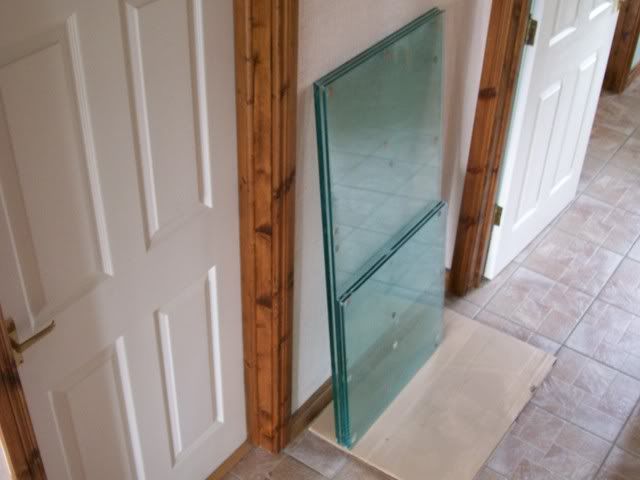
The first things first as they say was to get the raw material cut to size, as I work in a glass factory and a glasscutter by trade this was not a problem. For neatness I also had all the edges polished
The next job in hand was to have the base of the aquarium milled by CNC machine to accept the bulkheads for the overflows and returns in a corner weir.

A series of three holes were milled in the left rear corner of the base (the holes have to be cut larger than the actual bulkhead stated sizes)

These holes would accept the Bulkheads (2x 40mm & 1x 25mm)

Two larger drains at the rear and a smaller return to the fore
Finally made a start on building the tank.
Due to the Garage still being full of crap, I have taken up residence in the sitting room with my old Banjo and Piano.
Anyway please excuse odd picture angles and suchlike due to space limitations.
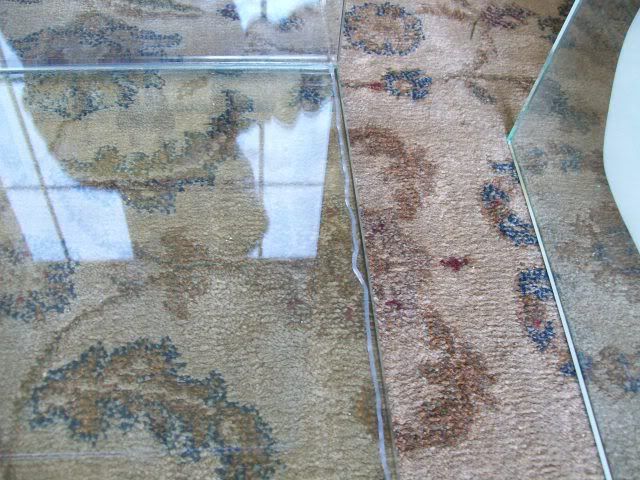
The front is already in situ on this shot, I'm now working on the end panels. (I would normally start with the ends, but this stuffs bloomin heavy)
Notice the small tacking bead of silicone on the base section the same is applied to one edge of the end panel where it meets the front.
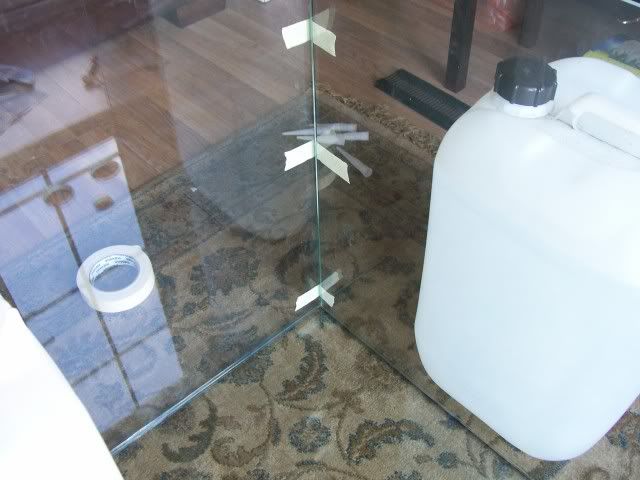
All squared up and taped and support given due to lack of help (all family at work)
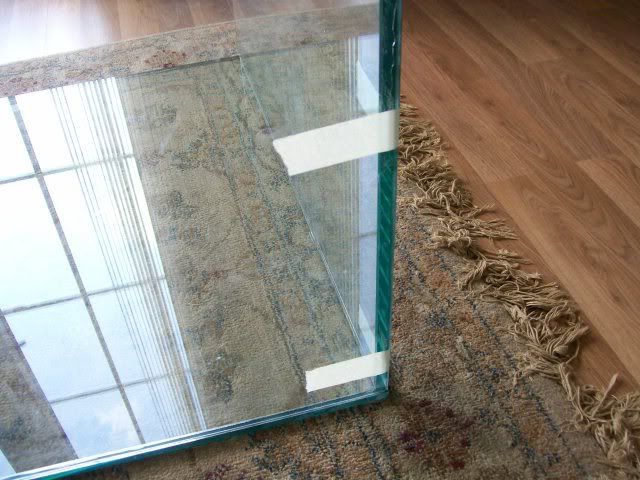
End adhered to the front panel, squared and taped

Wider angled shot
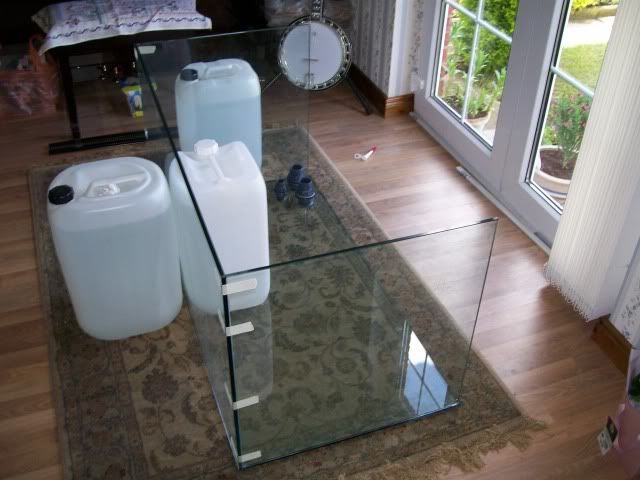
Both end panes and the front is now tacked, awaiting the back panel.
I got the last panel (back pane) tacked, levelled and squared.
The whole thing is now banded and waiting to cure. All went smoothly with no hiccups.

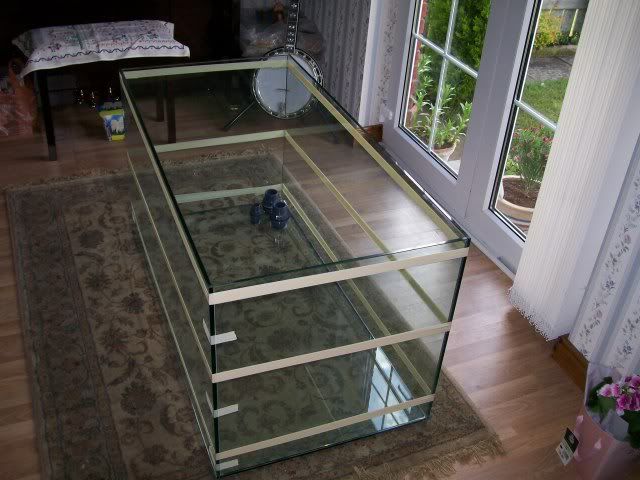
Well the banding tapes are all off now and I have been throwing this tank around somewhat this morning. No creeks or cracks to be heard.
I've moved on to taping the inside of the tank in preparation for the eventual sealing.
I am going with a 10mm bead width on this tank as it's the biggest one in regards to width and depth that I have built thus far.
I have built six footers before for which I only used 8mm bead width.
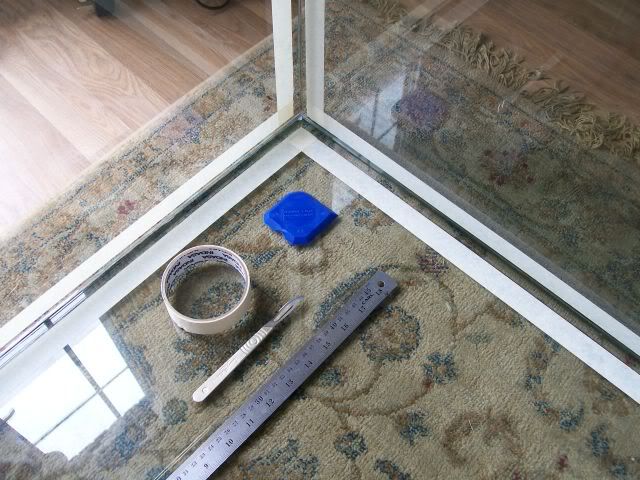
Some of the tools employed to make the 10mm bead runs.

A picture showing the 10mm bead channels

All done!
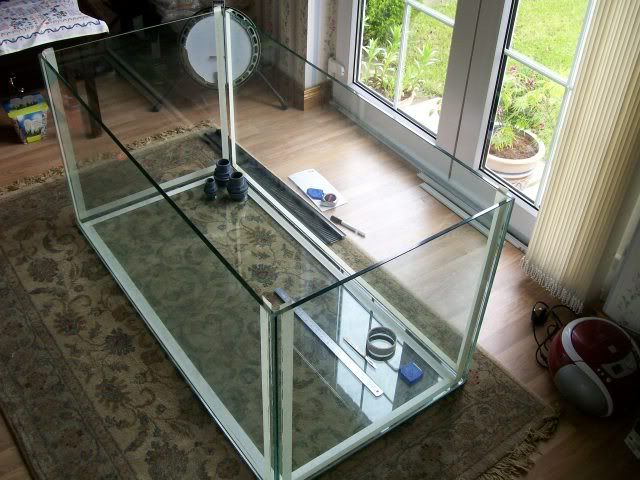
All I have to do now is clean the channels with some thinners and were good to go.
I've just finished tacking, squaring, taping and sealing the Weir Box. I didn't want to waste a silicone nozzle as the tank itself requires a larger fillet.
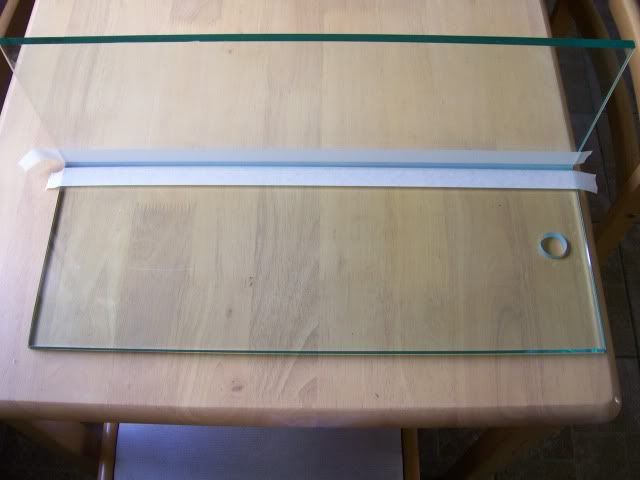
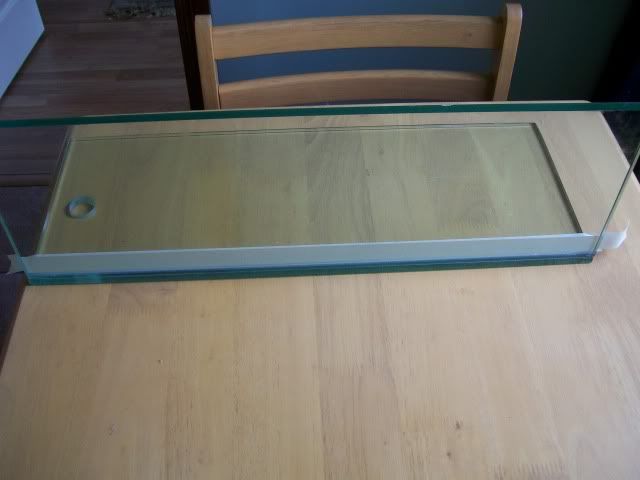
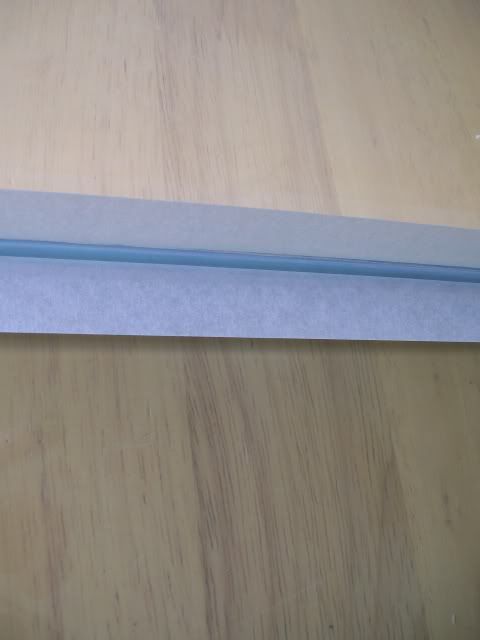
The aquarium is now fully sealed and all the tapes have been removed

The Weir Box has been placed in situ and checked for squareness.
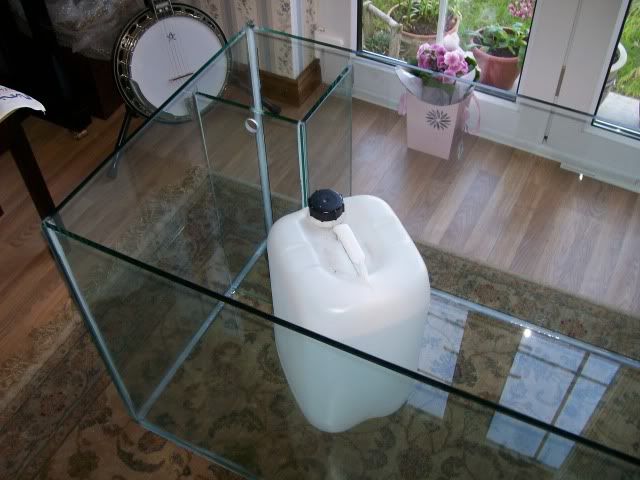
In the following two pics the Weir Box has been tacked to the walls of the aquarium with a fine bead of silicone
(A water barrel as be placed against the assembly until the silicone cures.
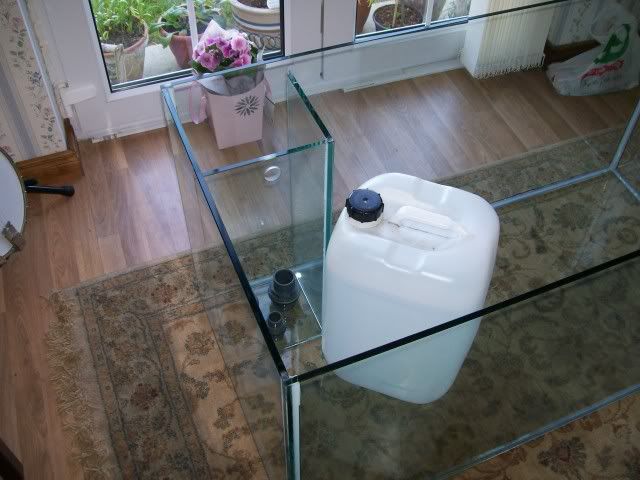
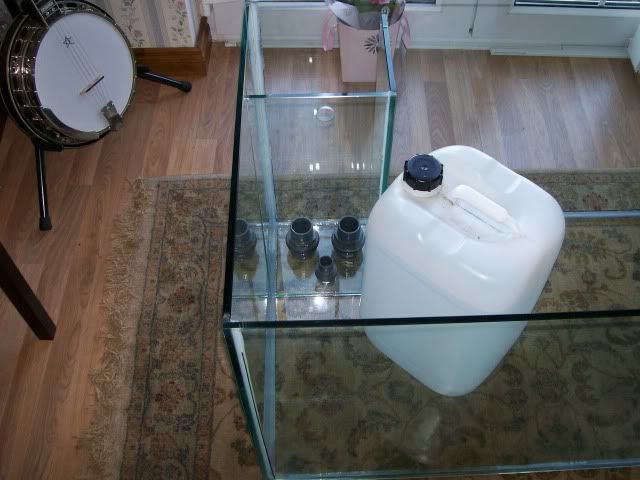
I Fabricated my weir comb from some black plastic Soffit Vent Strip
(see below for profile)
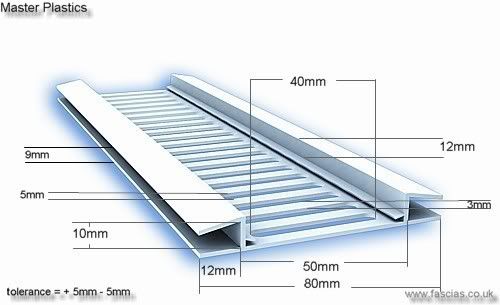
I spent a little time cutting and fitting the Weir Comb. The first job was to cut the piece of black soffit in half
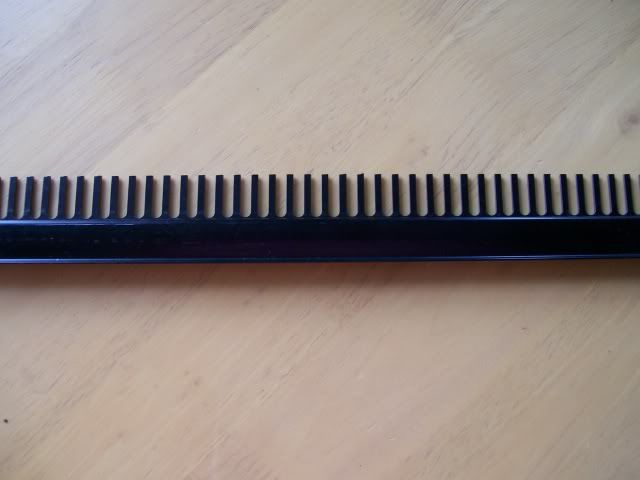
I have cut the Weir Comb
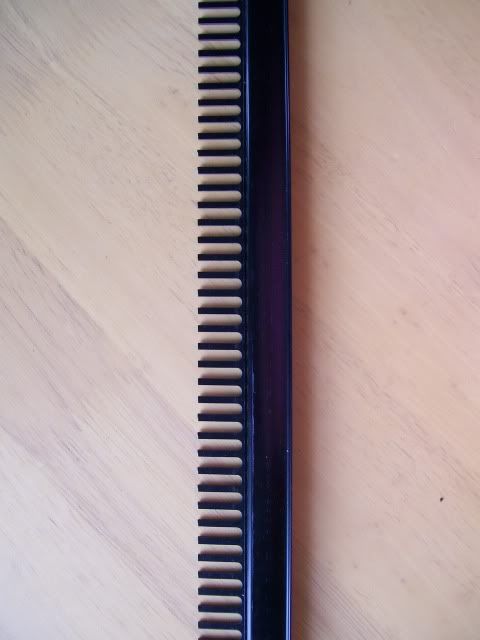
into one length to begin with
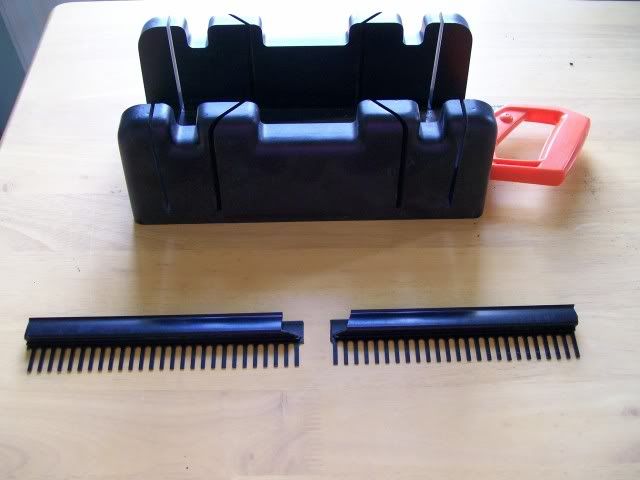
Then I cut it to the exact length and mitred the corners for a neat tidy fit.

This now slots neatly on top of the glass Weir Box

All finished, now on to the next little job!....The Bracing
Well we are nearing the end of this aquarium build and I've completed the bracing. Things really did go as smooth as expected, no major hiccups were encountered so I am relieved to have got to this stage.
So here follows some photos of the actual tank bracing.
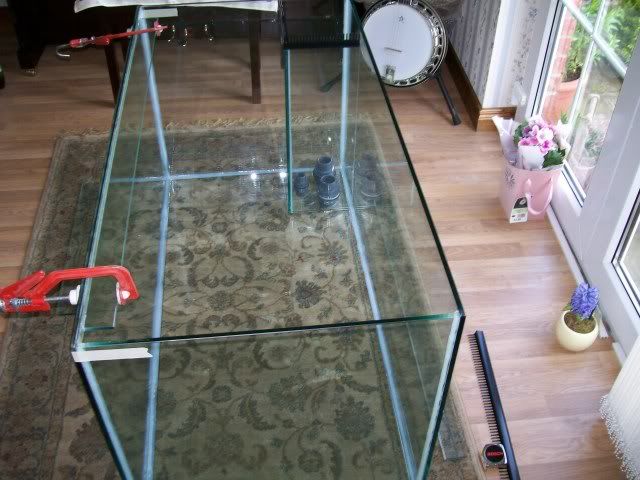
Clamps holding the front bracing spar in situ.
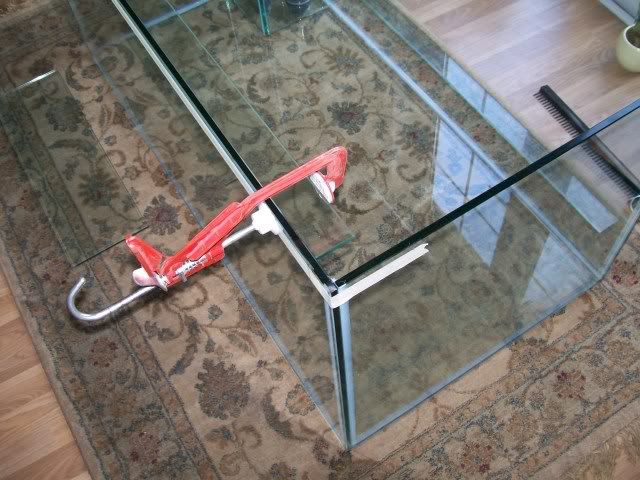
The front bracing spar
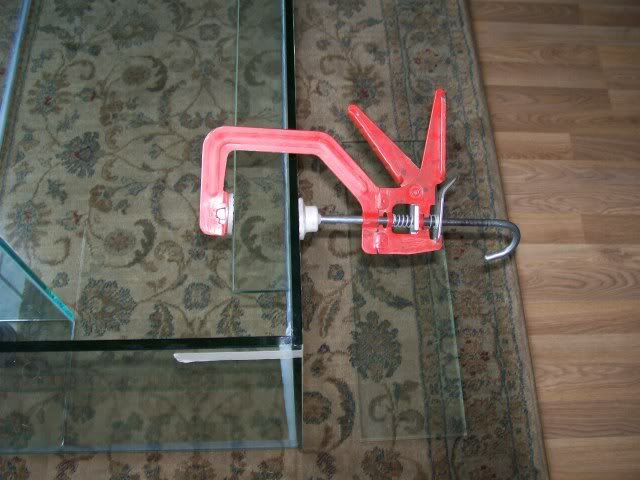
A close-up shot of the clamping on the front bracing spar

Another shot of the front spar
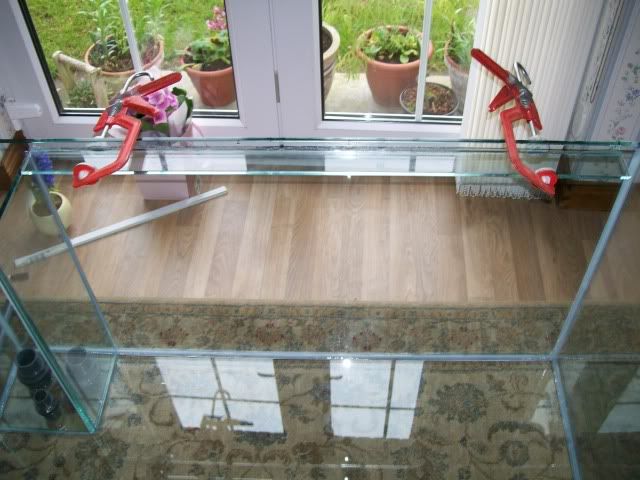
The rear bracing spar, levelled and clamped in situ
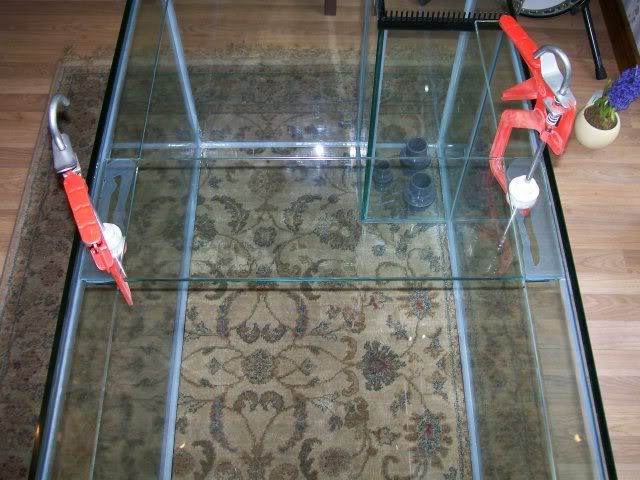
The cross brace 200mmx8mm (centred and sealed)
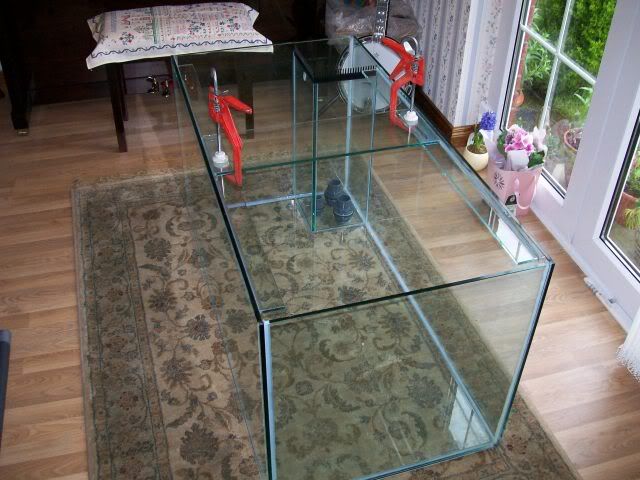
Well all the braces are in place now and once cured and sealed I will move onto the internal plumbing.
The curtain is now ready to close on this particular section pertaining to the build in of this tank. All that is left is for me to perform some internal plumbing and give the project a good clean.
In the meantime here are some pictures concerning the in-tank plumbing
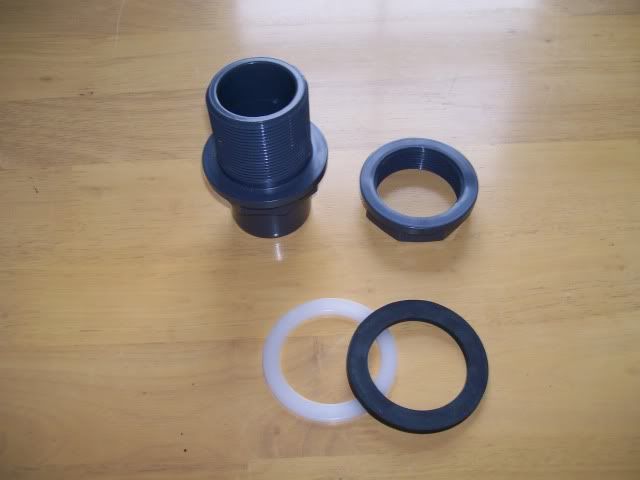
The washers on the Bulkheads must be removed as these will eventually rot in a Saltwater environment and could eventually lead to leaks (Which wouldn't endear me to my better half if that happened :no:)

So with all the washers discarded, we're good to go!
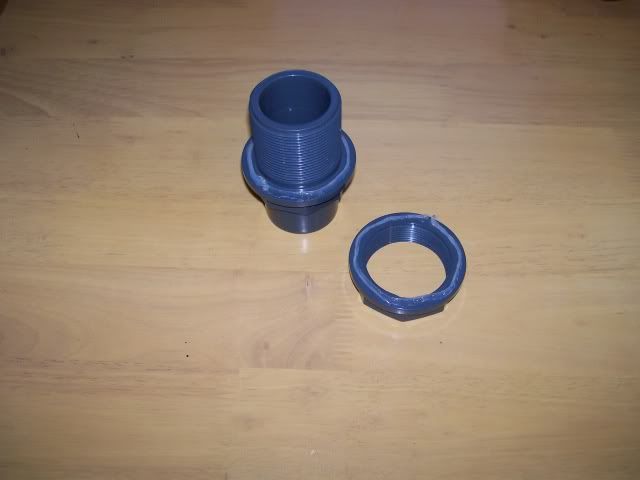
A generous bead of silicone is applied to each flange of the Bulkhead before connecting to the tank
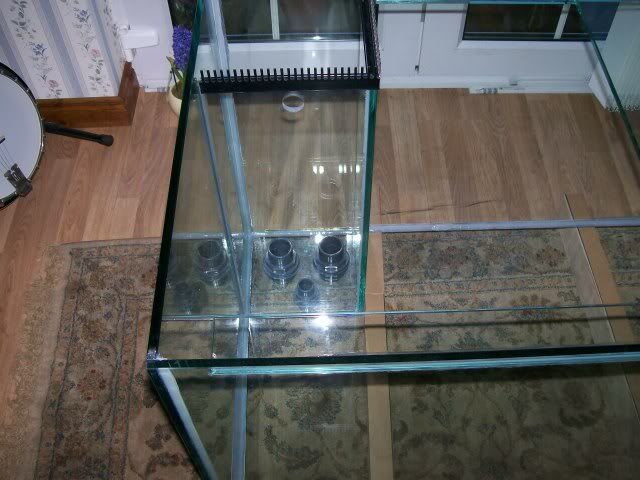
This photo shows all the Bulkheads inserted in the tank base and silicone allowed to cure
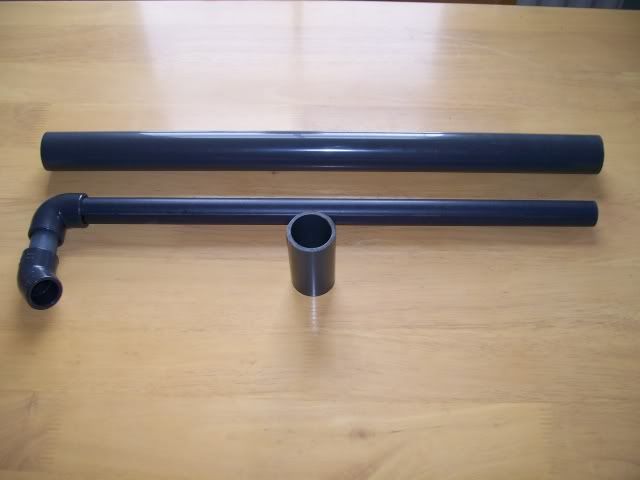
Next the pipework is cut to size. The larger 40mm pipe is the actual overflow (it is cut just slightly lower than the height of the weir wall), the smaller 40mm pipe is used primarily for sound dampening purposes, which I will explain later in another chapter of this build. The 25mm pipe with the 90 and 45 degree bends is for the return from the sump.
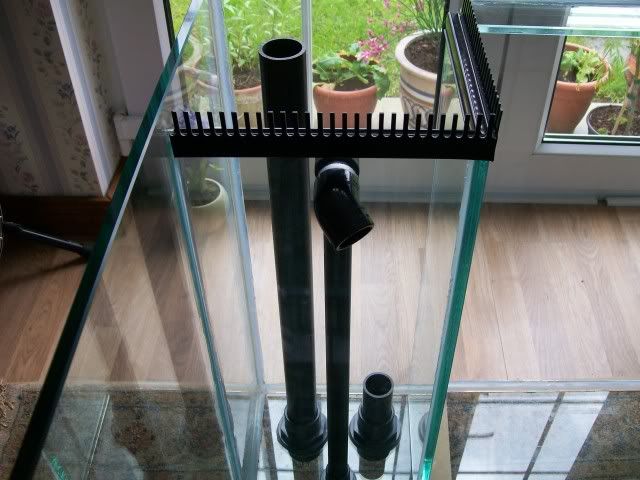
Finally all the pipework is placed in situ, but as yet not joined with solvent weld glue. All the hard jointing will be performed later.
Well that just about wraps up this chapter in the building of a Reef Aquarium.
Hope you were able to glean something from this topic.
Happy Reefkeeping
Regards

